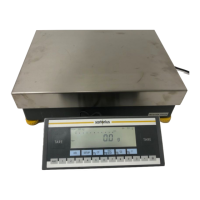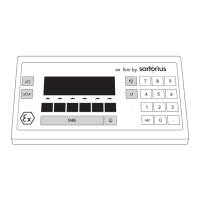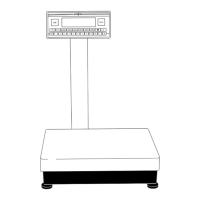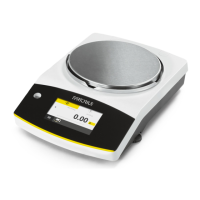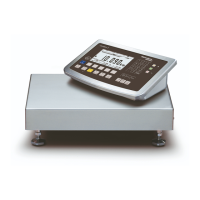Operation
Basic Weighing Function
Purpose
The basic weighing function is always
accessible and can be used alone or
in combination with an application
program (Toggle between Weight Units,
Counting, Weighing in Percent, etc.).
Features
– Taring the scale
– Assigning IDs to weights
– Printing weights
– Printing ID codes for weights
Factory Settings
Tare:
After stability
Manual/auto print mode:
Manual with stability
Line format:
For other apps/GLP
(22 characters)
Soft Key Functions
isoTST Initiate calibration/
adjustment routine
isoCAL Press to start isoCAL
routine
S ID Store ID entered
* including the Signatories of the
Agreement on the European
Economic Area
Under-Scale Weighing
A port for an under-scale weighing
hanger is located on the bottom of
the scale.
FC… BBE, FC… CCE:
§ Open cover plate (1) on the bottom
of the scale
§ Attach the sample (e.g., using a
suspension wire) to the hook (2).
FCG… EDE:
§ Use a suitable screwdriver to remove
the cover plate from the bottom of
the scale.
§ Fasten the hook to the cross-bar
(see ”Accessories“).
$ If necessary, install a shield for
protection against drafts
!Important Note Concerning Verified
Scales Approved for Use as Legal
Measuring Instruments in the EU*:
The under-scale weighing port may not
be opened or used when an approved
scaleis being operated as a legal
measuring instrument
Preparation
§ Turn on the scale: press e
> The Sartorius logo is displayed
$ To tare the scale, if desired: press t
> The
S symbol is displayed when
a verified scale is tared or zeroed
(± 0.25 digits).
! Important Note Concerning Verified
Scales Approved for Use as Legal
Measuring Instruments in the EU*:
The type-approval certificate for
verification applies only to non-
automatic weighing instruments; for
automatic operation with or without
auxiliary measuring devices, you must
comply with the regulations of your
country applicable to the place of
installation of your scale.
§ You must calibrate the scale at the
place of installation before using it as
a legal measuring instrument (see the
section entitled “Calibration and
Adjustment” in this chapter)
$ The temperature range indicated on
the verification ID label must not be
exceeded during operation
31
